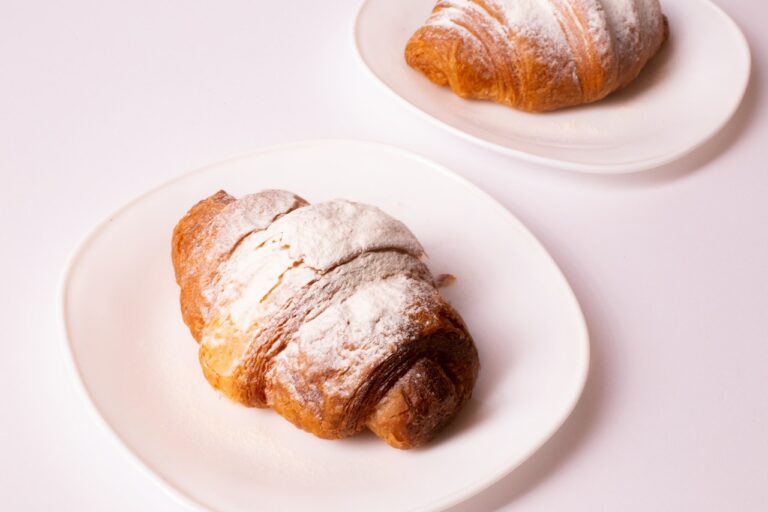
A Patisserie Pilgrimage: From Paris to Pompeii in Twelve Pastries
by Lyndsey Hall
26 September 2023
Take a stroll down any Parisian street and you’re sure to pass at least one patisserie, perhaps stopping to look in the window and admire the pretty confections inside. Luckily, you don’t have to jet off for a weekend in France to enjoy extravagant pastries (unless you really want to, that is).
Patisserie has become increasingly popular in the UK in recent years, with shops filled with delicate bakes popping up on high streets across the country, delighting customers with their elegant displays. And it’s not just the French they’re taking inspiration from: Italy, Germany, Belgium, and even the Netherlands all boast their own versions.
Whether you call it a patisserie, a pastry or a pudding, you’re sure to find a few new recipes to tempt your customers with among this list of the most popular pastries.
Canelé
You may not have heard of these delightful little cakes, but they’re about to become your new favourite treat. Comprised of a thin, caramelised crust and a rich, vanilla custardy centre, they’re a perfect mini indulgence.
Believed to have originated in a convent in the late eighteenth century, the nuns would make these simple but satisfying cakes to give to the poor. Canelé (or cannelé de Bordeaux) have been perfected by pastry chefs over the years and are now synonymous with their hometown (almost as much as the wine!).
Choux pastry
Choux pastry, or pâté de choux, is a simple pastry made by combining butter, eggs, flour, and water, which creates steam during baking, giving the buns their famous puff. Once you’ve mastered this recipe, you can make choux buns, profiteroles, éclairs, and so much more!
Traditionally, choux (French for ‘cabbage’) pastry was savoury and stuffed with cheese and herbs, but it’s better known nowadays as a sweet treat, filled with cream or crème anglaise, fruit, and anything else you fancy!
Clafoutis
The classic clafoutis involves covering a dish of black cherries with a thick custard made from ground almonds, before baking and serving warm, with just a dusting of icing sugar. The lack of pie crust makes this a light, summery pudding that would be great with a glass of champagne (or English sparkling wine).
It’s an unexpectedly simple recipe and would work equally well with lots of other seasonal fruits, especially blackberries, apples or pears. Perfect for using up any seasonal produce!
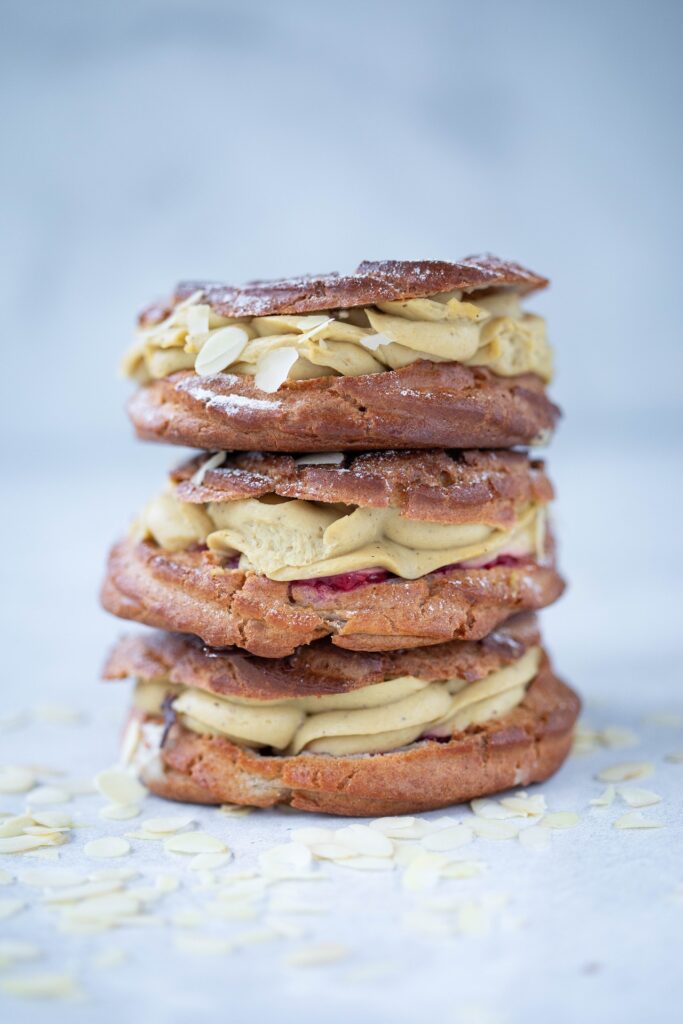
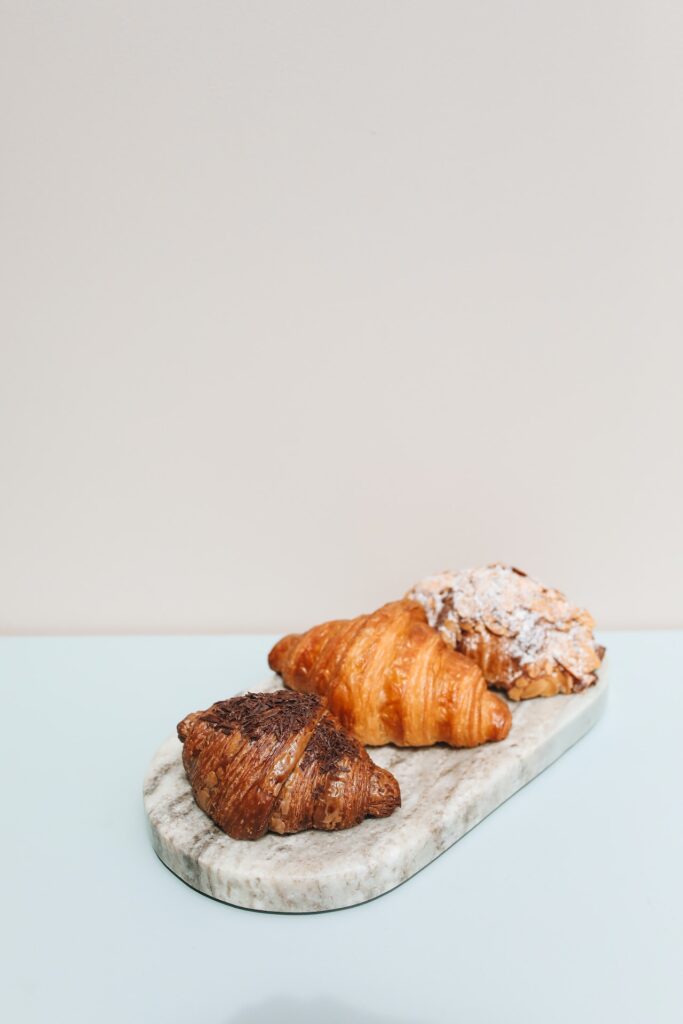
Croissants & Pains au Chocolat
What more can we say about these classic French icons? Croissants and pains au chocolat are ubiquitous in France, with every boulangerie, viennoiserie and patisserie selling them by the bouquet load.
Delicious warm from the oven with a cup of coffee, ideally with a view of the Seine. Or an ambient YouTube video of a Paris café would probably do the trick, too.
Financier
This almond-scented mini cake is light and moist, with a crisp, eggshell-like crust. Baked in small loaf moulds, these tiny, tastebud tempting treats are similar in size to petits fours. The name ‘financier’ is thought to have originated from the moulds, which resemble the shape of gold bullion.
Made from almond flour, beurre noisette (brown butter), egg whites and sugar, these spongy little cakes are delicious as they are, or you can add any fruit, nut, or chocolate chip that takes your fancy!
Flan Patissier
Flan Patissier, or French custard tart, is similar to the English egg custard and the Portuguese pastel de nata, but instead of individual tartlets these flans are much larger and eaten by the slice. The age-old recipe involves filling a pastry crust with vanilla custard and baking until a golden crust forms on top.
Invented by the Romans and perfected by the French, these sweet custard flans are a staple in patisseries and are best enjoyed warm from the oven.
Fraisiers and Framboisiers
Fresh strawberries or raspberries wedged between layers of syrup-soaked Genoise cake and cream – heaven! Fraisiers (from the French for strawberry, ‘fraise’) and framboisiers (from ‘frambois’, meaning raspberry) are a little more complicated, but absolutely worth the work.
Genoise sponge is known for its light, airy texture, thanks to the intensively whipped eggs. Simply brush strawberry (or raspberry) syrup over the two sponge layers, and sandwich with mousseline cream (a mixture of crème pâtissier and whipped butter). Et voilá! A delicious summery dessert, pretty enough for any window display.
Ganache cake
Intensely chocolatey and incredibly indulgent, ganache cake is a chocolate-lover’s dream. Created from layer upon layer of light chocolate sponge and rich, decadent ganache, it’s a classic in French patisseries and restaurants, and a real customer favourite.
Ganache was originally created by accident, or so the story goes. The word ‘ganache’, in 19th century France, was a colloquialism for a fool, so when a chocolatier’s apprentice accidentally spilled hot cream over melted chocolate, his employer shouted “Ganache!”. We wish all our mistakes turned out as delicious!
Gateau
Gateau isn’t just the French word for cake, it also refers to a classic French style of cake, with light sponge layers and a rich filling. Lighter than a ganache cake, and denser than a fraisier, gateau lends itself well to a variety of flavours and fillings.
Chocolate gateau is a classic, but add Morello cherry purée and you’ve got yourself a Black Forest gateau! Or give it a summery twist with white chocolate and strawberry, for a lighter gateau.
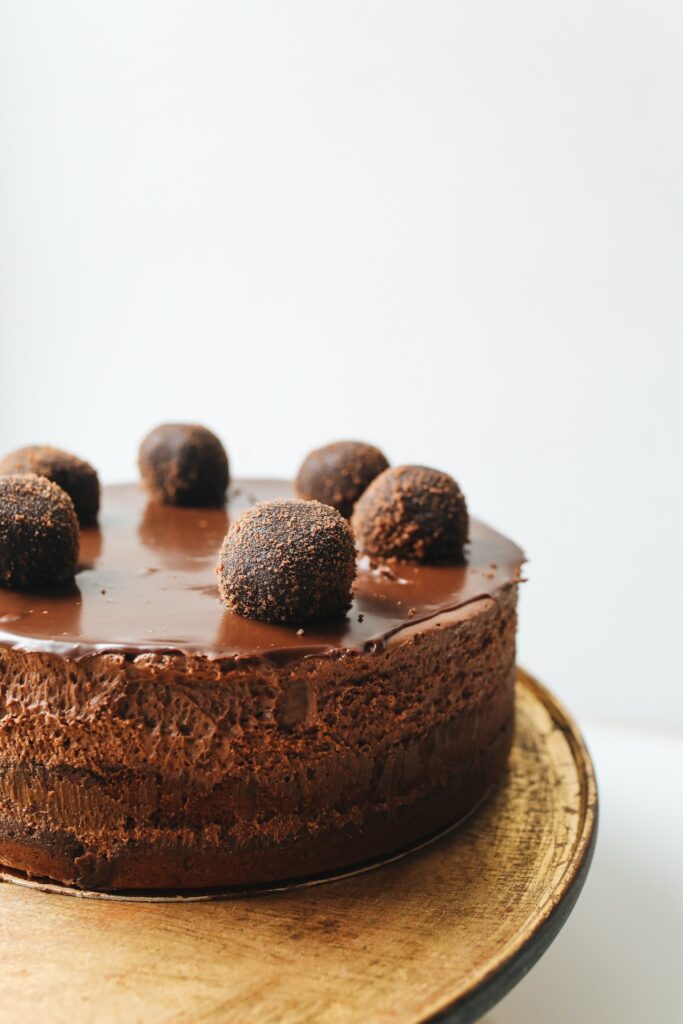
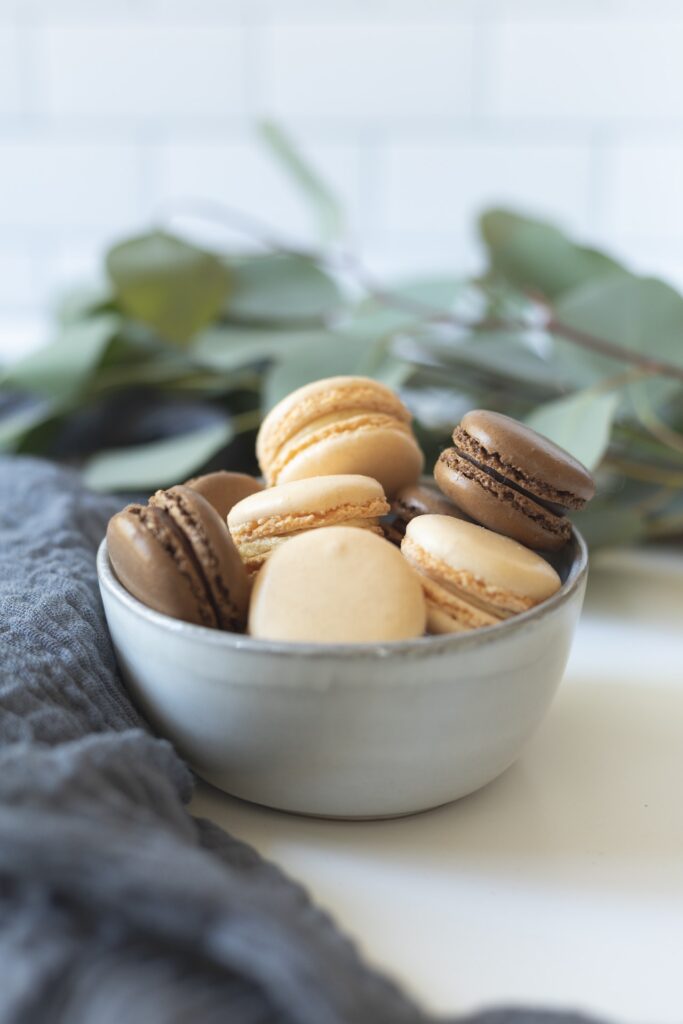
Macarons
These little, buttercream-filled meringue sandwiches are almost as famous as the Mona Lisa and the Eiffel Tower.
Macarons were thought to have been introduced to France by Catherine di Medici in the 16th century, becoming well known during the French Revolution when two nuns (known as the ‘Macaron Sisters’) baked and sold them.
But the humble macaron shot to stardom in the 1930s when Ladurée began selling the double decker, ganache-filled biscuits we know and love today. They now sell 15,000 macarons every day!
Madeleines
If you haven’t tried a Madeleine, you’ve obviously never been to France. These buttery scalloped biscuits are everywhere, from breakfast counters in café’s and hotels, to the supermarket shelves, and even as individually wrapped, point-of-sale items. These light, airy, mini sponge cakes taste incredible, and look like little seashells thanks to the shell-shaped depressions in the baking pans.
Madeleines are brilliantly versatile, you can add a little lemon zest or vanilla extract to intensify their flavour, or even add chocolate chips or other flavouring extracts. Perfect with a cup of coffee!
Mille-feuille
Millefeuille translates to ‘a thousand leaves’ and the first recorded recipe dates back to the 17th century, in La Varenne’s cookbook Le Cuisinier François. These flaky, delicate desserts are built from layers of thin pastry, cream filling and fondant icing. They’re pretty as a picture, with their feathered chocolate drizzle tops, and can be flavoured with cocoa, almond or vanilla. The filling can also be swapped for custard or whipped cream, or include jam, puréed fruit or nut paste.
Elegant and delicious, mille-feuille is a classic French patisserie that has reached as far as the UK, where we refer to it as vanilla slice or custard slice, and North America, where they call it a Napoleon (in reference to the city of Naples and its famed layered desserts, rather than the French military leader).
The art of patisserie has been perfected by pastry chefs over centuries, drawing influence from across Europe and coming to a natural peak in Paris. But the appeal of aesthetically pleasing desserts and delicate pastries doesn’t end on the other side of the Channel. The patisserie trend shows no sign of slowing down here in the UK, as customers seek out a small, affordable indulgence to give their day a sugary boost and brighten their mood in these often gloomy times.
Give a few of these recipes a try and we’re sure you’ll find a brand new customer favourite amongst them! Don’t forget to share what you make, send us a photo or tag us on social media.
Read our blog The Baker’s Dozen: Thirteen Ways to Boost Your Bakery Business for more ideas and inspiration for bakery and patisserie!

Lyndsey is a marketing executive, writer and lover of books and chocolate from Sheffield.
Her favourite chocolate is Cacao Barry Lactee Superieure.